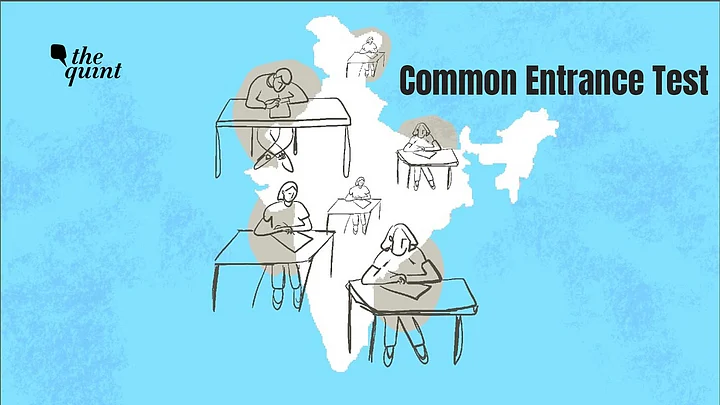Among the many progressive measures proposed by the National Education Policy of 2020 – revised after several decades – is the overhaul of the role, type and quality of assessments in school education.
It has, for all these decades, been a common rant among those seeking to offer high-quality higher education in the country that the board examinations currently tasked with providing a standardised relative picture of the learning abilities of school-leaving children actually give a very flawed and blurred image of such ability.
This is because they have testified, more than anything else, to skills like remembering, memorising and rote learning which, apart from being at the bottom of the pyramid of Bloom’s Taxonomy of learning outcomes, are of little value in the world of higher education, which is supposed to concern itself with creating real world problem-solvers, and of even less worth in the world of work thereafter.
The Many ‘Entrances’ to Higher Education
As a result of this, college after college ended up instituting entrance examinations either on its own or jointly with other institutions looking for similar abilities. The principal sufferer in this scheme of things became the hapless Class 12, or school-leaving student.
A student, who for no fault of hers and in order to keep various options open, would have to take on a multitude of entrance examinations. Each of these exams would come with their own idiosyncrasies and not-insignificant coaching costs, after overcoming the year-long and high-pressure exercise of appearing for the board examination itself.
This is why the moves to first introduce a common entrance examination to test for and testify to general aptitude, along the lines of the Standardised Admission Test (SAT) conducted for admission to undergraduate programmes at American universities, and second, set up a national assessment centre called PARAKH as a standard-setting body, are welcome ones.
Both also clearly demonstrate a deep understanding of the woes afflicting the current system.
Lowering Stakes, Increasing Reliability
PARAKH will help shift the focus of the board examinations to testing for higher-order learning abilities, enabling higher education institutions to repose greater faith in its assessment of the specialised subjects that students will continue to be examined for by these boards.
It will also provide a very fundamental incentive which can transform the approach to teaching itself at lakhs of schools around the country.
And the common entrance, which already has the explicit mandate to test ‘conceptual understanding’ and the ‘ability to apply knowledge’, will drastically reduce the emotional and financial burden on school-leaving students and also on the higher education system as a whole.
Over a period of time, the common entrance, depending on the flexibility and foresight with which it is designed and the extent of its uptake by colleges, also has the potential to substantially ease the stakes that currently ride on the ‘all-important’ board examinations which has been instrumental in making them the rat race that they have become.
This is because currently most colleges, in addition to having their individual or joint entrance test requirements, also accord considerable weight to the board examination scores for admission to undergraduate programmes
Flexibility the Key to Success
If, instead, the common entrance affords students the flexibility of more than one ‘attempt’ or sittings in a year, as SAT does for instance, then, coupled with similar flexibility that the NEP has proposed for the scheme of the board examinations itself, by making it less reliant on one ‘attempt’ in more ways than one, a school-leaving student can truly prioritise depth of learning, rather than strategise to ‘crack’ each of these examinations.
Of course, all this doesn’t make the common entrance a panacea, and thankfully it hasn’t been seen or proposed as one by the Kasturirangan Committee.
For colleges may continue to hold their own entrances in addition to the common entrance and are, in fact, under no obligation to even make the common entrance examination score a part of their admission criteria.
We do believe, though, that leaving it this way, in fact, provides a clean and automatic incentive for the common entrance to keep raising its quality, compelling one college after another to drop its individual entrance test and subscribe to the common one.
The eventual steady state of Indian students gaining admission into top institutions in the country after a non-toxic final year at school, where they’ve had the chance to achieve Bloom’s higher-order learning abilities of ‘understanding’, ‘analysing’ and ‘applying’ the subjects that they are truly interested in, is the need of the hour.
(Dr Jitin Chadha is founder and Director, Indian School of Business & Finance, while Chiraag Mehta is the Associate Director of the same institute. This is an opinion piece. The views expressed above are the authors’ own. The Quint neither endorses nor is responsible for them.)
(At The Quint, we question everything. Play an active role in shaping our journalism by becoming a member today.)
